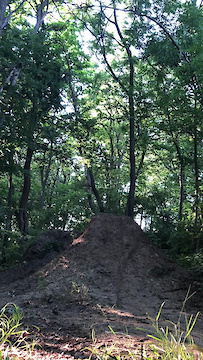

4 It appears there is an urgent need to identify factors that contribute to secondary risk of ACL injury (uninjured limb) in athletes who return to sport following ACL reconstruction.Īthletes often exhibit inter-limb asymmetries in limb loading during bilateral landing and jumping, even after they have completed rehabilitation and returned to sport. 3 In most cases the second ACL injury occurs during the first year following return to sport and involves the athlete’s previously uninjured limb (i.e. contralateral to the limb that underwent ACL reconstruction). 2 Unfortunately, athletes who have undergone ACL reconstruction are at relatively high risk for sustaining another ACL injury after returning to sport (compared to athletes without a history of ACL injury). 1 Surgical reconstruction of the ACL is commonly recommended for athletes who plan to resume sports participation. Gymnastics countermovement jump post- activation potentiation stretching.Anterior cruciate ligament (ACL) tears are common among young athletes who compete in sports that involved frequent landing and jumping, such as basketball. Key PointsThe initial levels of flexibility and vertical jump ability have no effect on straight leg raise range of motion (ROM) and counter-movement jump performance (CMJ) of elite gymnasts following warm-up protocols differing in stretching and potentiating exercise volumesStretching of the main leg muscle groups for only 15 s has no effect on ROM of elite gymnastsIn these highly-trained athletes, one set of 5 tuck jumps during warm-up is not adequate to increase CMJ performance, while 3 sets of 5 tuck jumps result in a relatively large increase in CMJ performance (by 4.6% above baseline), despite a 5.9% increase in flexibility due to the 30 s stretching exercises.

Furthermore, 3 sets of 5 tuck jumps result in a relatively large increase in CMJ performance despite an increase in flexibility in these highly-trained athletes. It is concluded that the initial levels of flexibility and CMJ performance do not alter the responses of elite gymnasts to warm-up protocols differing in stretching and potentiating exercise volumes. Similarly, CMJ remained unchanged after the short warm-up protocol, but increased by 4.6 ± 0.9% (p = 0.012) 4 min after the long warm- up protocol, despite the increased ROM. In the short warm-up protocol, ROM was not affected by stretching, while in the long warm-up protocol ROM increased by 5.9% ± 0.7% (p = 0.001) after stretching. However, all athletes, irrespective of group, responded in a similar fashion to the different warm-up protocols for both ROM and CMJ, as indicated from the lack of significant interactions for group (condition x group, time x group or condition x time x group). A type of warm-up x time interaction was found for both ROM (p = 0.031) and CMJ (p = 0.016). Three-way ANOVA showed large differences between the three groups in baseline ROM and CMJ performance. ROM and CMJ were measured before, during and for 12 min after the two warm-up routines. One warm-up included short (15 s) static stretching followed by 5 tuck jumps, while the other included long static stretching (30 s) followed by 3x5 tuck jumps. Three groups of elite athletes (10 male, 14 female artistic gymnasts and 10 female rhythmic gymnasts) varying greatly in ROM and CMJ, performed two warm-up routines. ROM and CMJ were measured after two different warm-up protocols involving static stretching and potentiating exercises.


This study examined the effects of baseline flexibility and vertical jump ability on straight leg raise range of motion (ROM) and counter-movement jump performance (CMJ) following different volumes of stretching and potentiating exercises.


 0 kommentar(er)
0 kommentar(er)
